
Soldiers of the 1st Polish Army (left) and the Red Army (right) raise the Polish national flag over liberated Warsaw.
Anatoly Morozov“I take a solemn oath to the Polish land, drenched in blood, to the Polish people suffering under the Hitlerite yoke. I swear that I will not tarnish the name of a Pole and will faithfully serve the Motherland…” said the volunteers, who joined the ranks of the 1st Polish Infantry Division named after Tadeusz Kosciuszko during World War II.
This military unit fought on the Soviet-German front in 1943 under the operational control of the Red Army. By the end of the war, two full-fledged Polish armies fought shoulder to shoulder with Soviet soldiers against the Nazis.

Soldiers of the 1st Polish Tadeusz Kosciuszko Infantry Division take the oath.
Georgy Khomzor/SputnikThe formation of Polish units in the USSR began in the Summer of 1941 by agreement between the Soviet government and the Polish government in exile. Poles living in the Polish territories that were ceded to the Soviet Union in 1939, interned servicemen of the Polish army, exiles and refugees all joined the army under the command of Władysław Anders.
Due to political and ideological differences between the Soviet and Polish sides, Anders' 115,000-strong army never took part in the battles on the Eastern Front. At the suggestion of Great Britain, in March 1942, it was withdrawn from Soviet territory to the Western Front to fight the Germans under the command of the British headquarters.
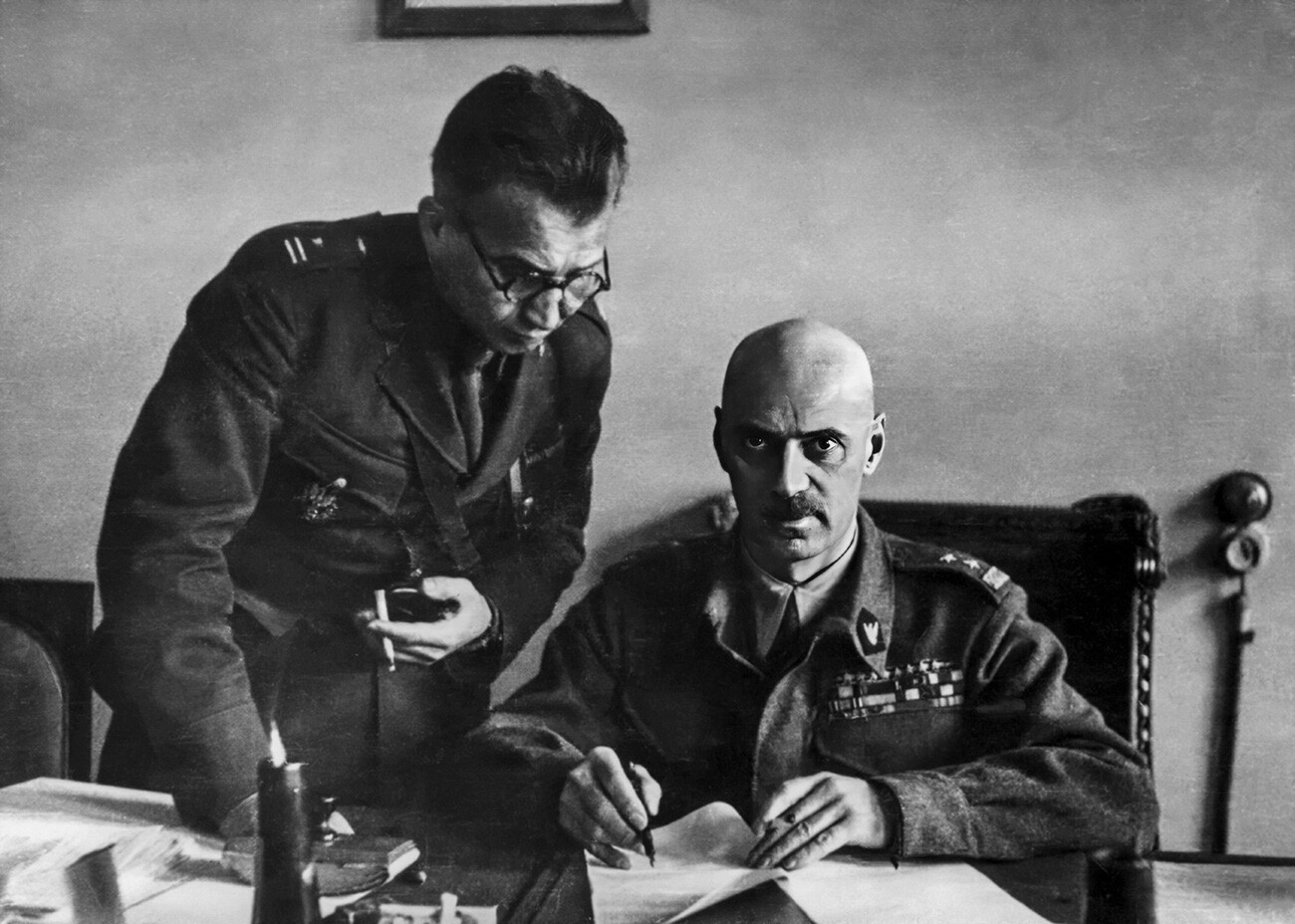
General Władysław Anders (R) and colonel Leopold Okulicki.
Public DomainHowever, not all Polish servicemen left the USSR. A group led by former Colonel Zygmunt Berling expressed a desire to fight alongside the Soviet troops.
In the Spring of 1943, the Soviet leadership decided to form Polish units loyal to the USSR. On May 14, the creation of the 1st Polish Tadeusz Kosciuszko Infantry Division began near Ryazan. Berling, who was sentenced to death for desertion by the military court of the Polish government in exile, was appointed commander.
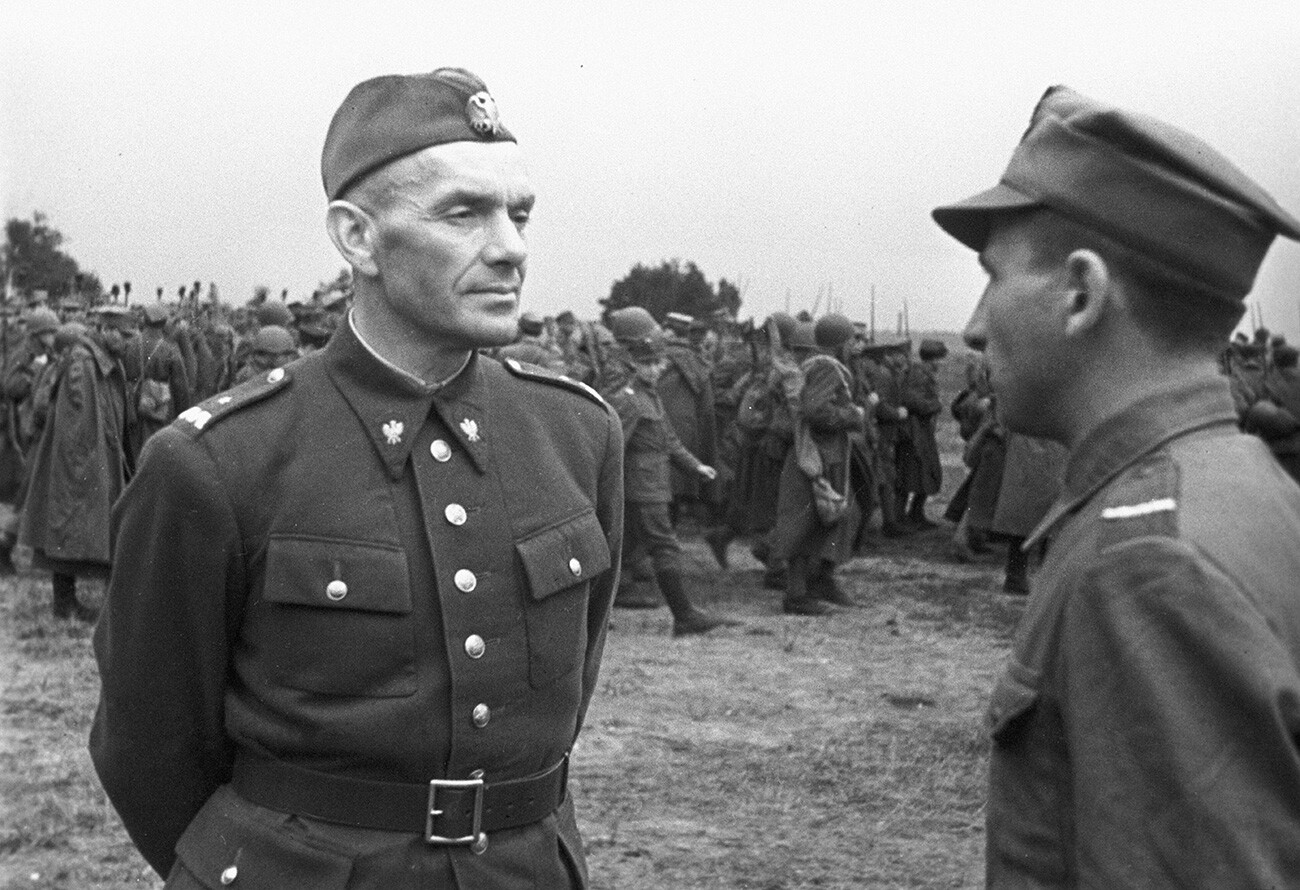
Zygmunt Berling.
Oleg Knorring/SputnikThe division experienced an acute shortage of command personnel. Many officers died in 1940 during the repressions by the Soviet security services or left the country along with General Anders.
Then, commanders began to be transferred to Polish units from Soviet units. Between May 1943 and July 1945, almost 20,000 Red Army officers were sent there, of whom only 3,500 were Polish by nationality.
One of the non-Polish officers in 1944 submitted a report on transfer from the 2nd Polish Division “to any section of the front”, noting: “I don’t know the Polish language at all and don’t understand what the soldiers are telling me.”
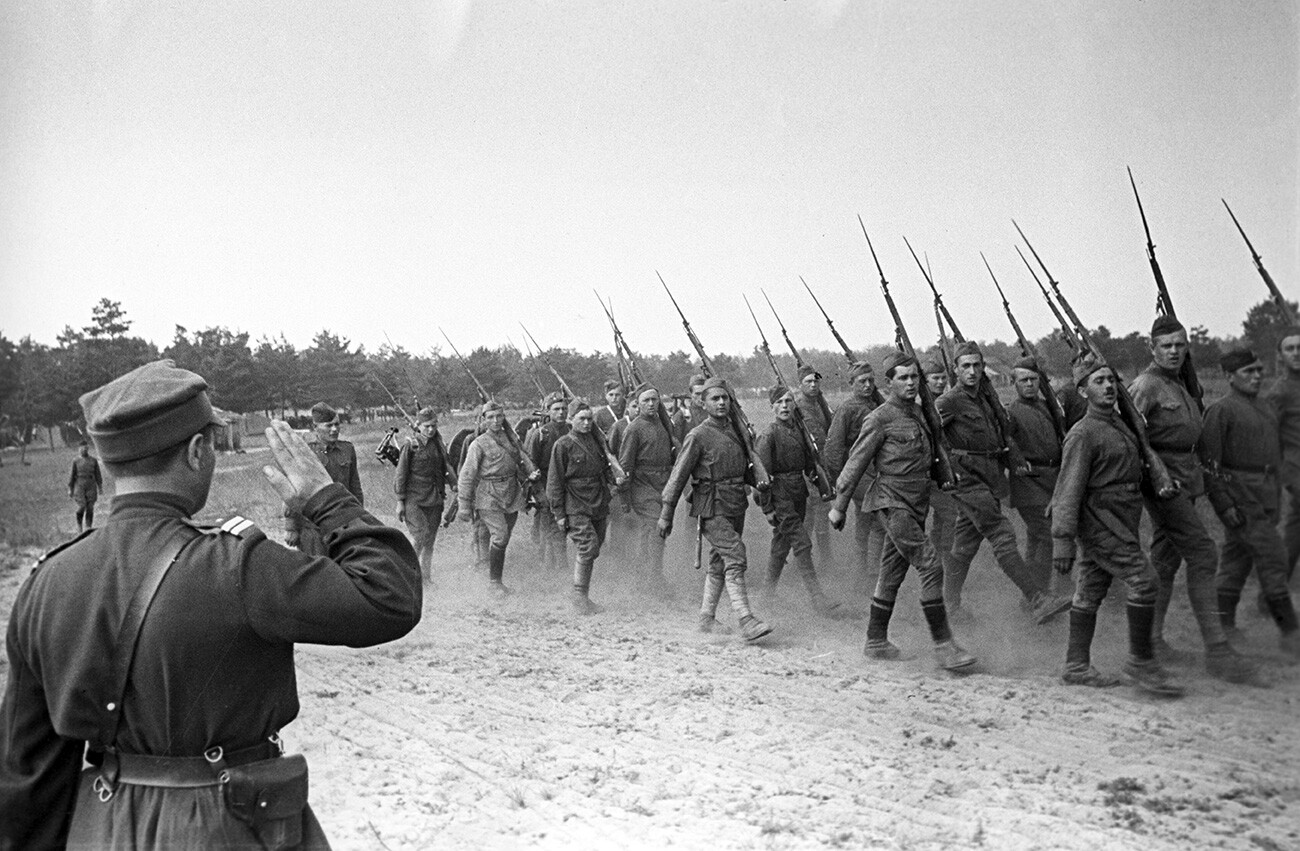
The 1st Polish Tadeusz Kosciuszko Infantry Division is heading to the front.
Sergei Loskutov/SputnikIn August 1943, a corps was deployed on the basis of the division. In addition to infantry units, it included the 1st Polish Tank Regiment named after the Heroes of Westerplatte and the ‘Warsaw’ 1st Fighter Aviation Regiment.
The Poles received their baptism of fire on October 12 of the same year near Lenino, Mogilev Region. The number of those killed, wounded and missing in the Kosciuszko Division amounted to up to a quarter of the personnel.
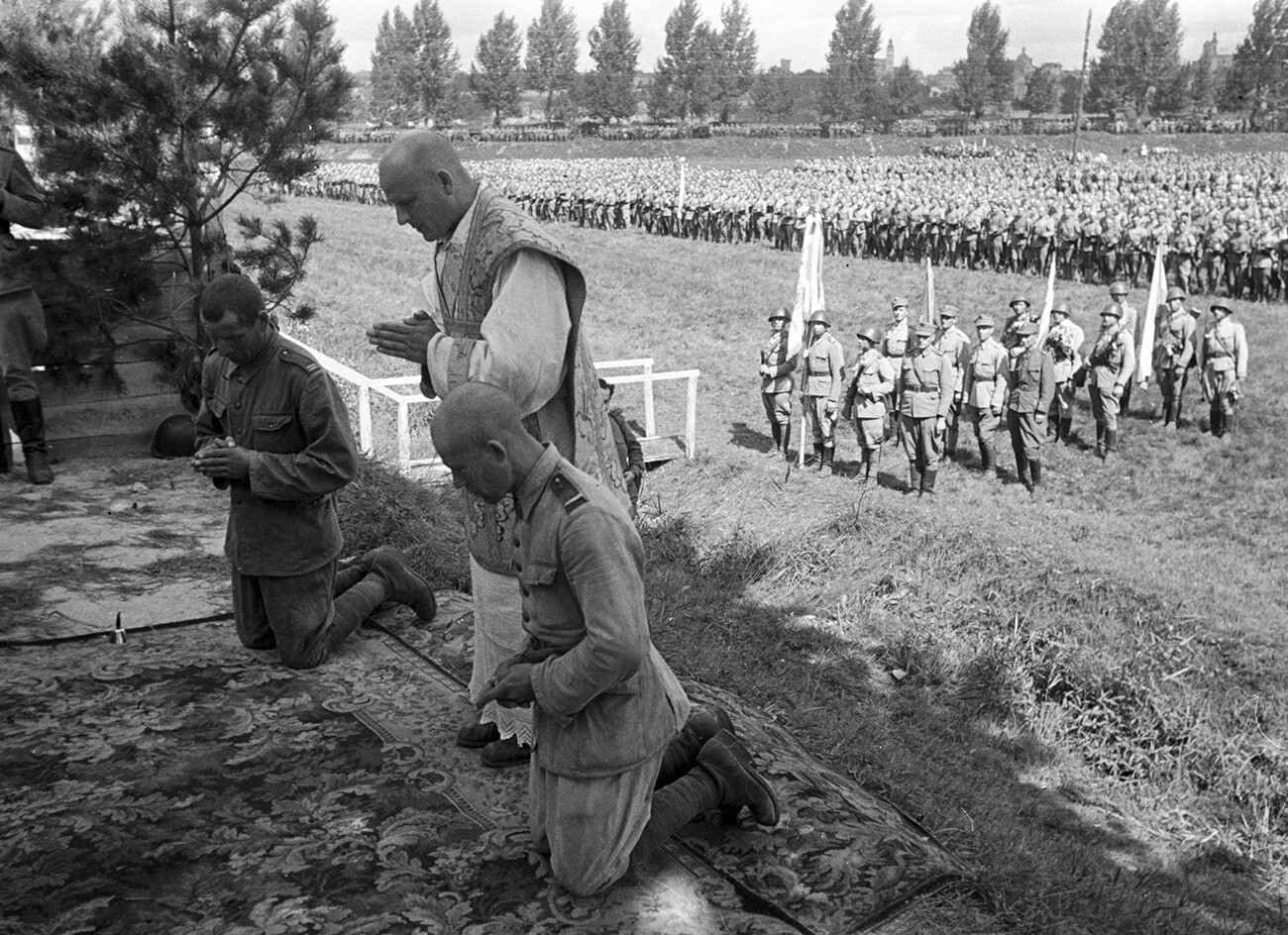
Prayer service before the departure of a military unit of the Polish Army to the front.
Mikhail Trakhman/SputnikIn the Spring of 1944, the Polish units were deployed into the 1st Polish Army, which, in addition to infantry divisions, included artillery brigades, tank and aviation regiments, a communications regiment, engineering, reconnaissance and flamethrower battalions.
Operationally, the army was subordinated to the 1st Byelorussian Front and actively participated in the liberation of its homeland. During the Warsaw Uprising, it was its fighters who crossed to the other side of the Vistula to help the rebels. However, under pressure from the enemy, they soon retreated.
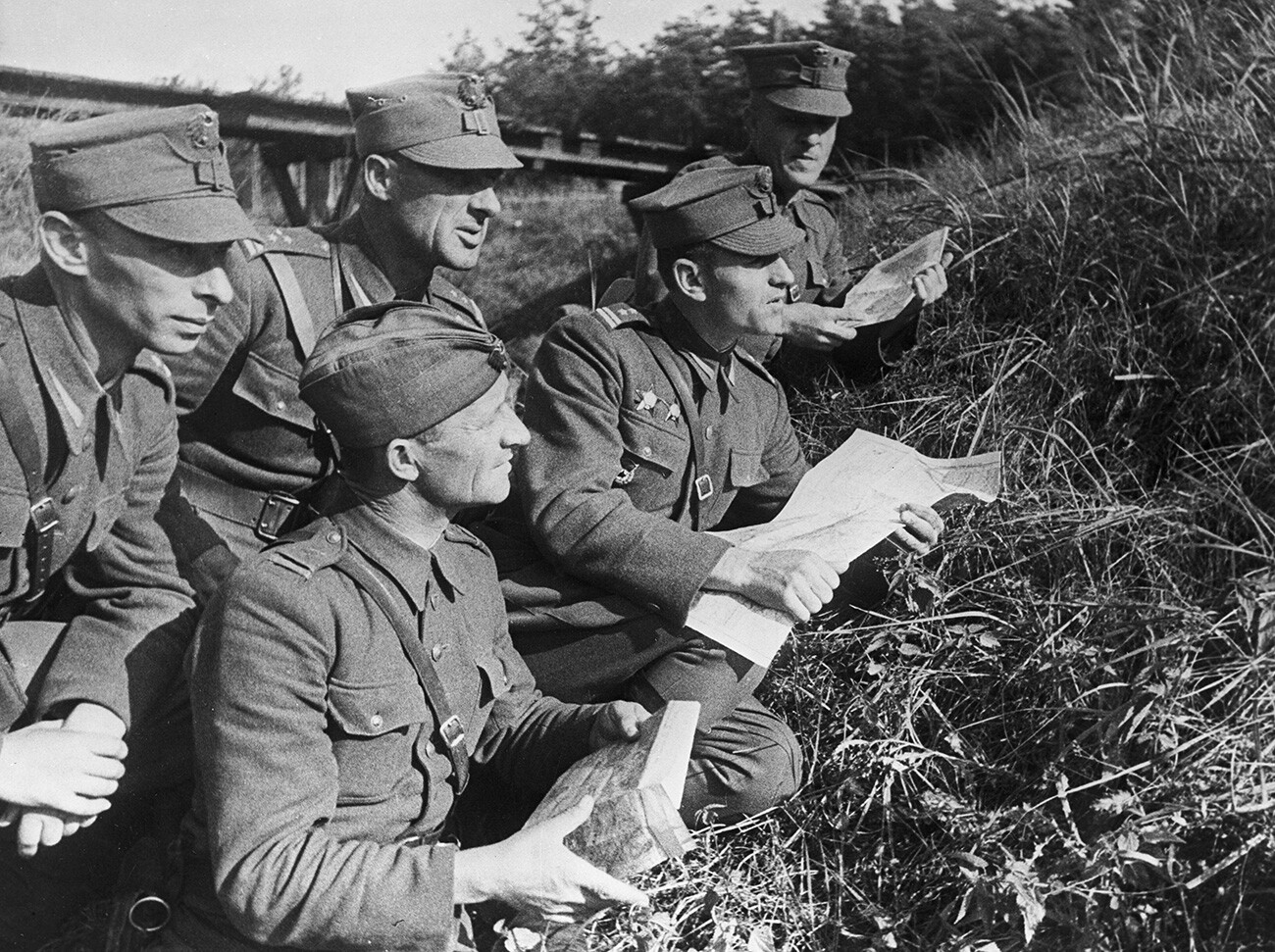
Polish officers during reconnaissance of the area before the battle.
SputnikOn July 21, 1944, the pro-Soviet Polish government created in Lublin – the Polish Committee of National Liberation – announced the unification of the 1st Polish Army with the large partisan Armia Ludowa (People's Army) into a single Ludowe Wojsko Polskie (Polish Army).
The mobilization announced in the liberated territory of Poland made it possible to call up tens of thousands of new soldiers to the ranks of the Armed Forces and, in the Summer of 1944, to form the 2nd Polish Army under the command of General Karol Swierczewski.

A soldier of the Polish Army and a resident of Lublin raise a flag over the liberated city.
Mikhail Trakhman/SputnikThe 2nd Army acted under the operational control of the 1st Ukrainian Front of Marshal Ivan Konev. In April 1945, together with Soviet units, she advanced on Dresden – Swierczewski was literally obsessed with the idea that the Poles would be the first to enter the city.
Because of this desire, the Polish troops greatly extended their communications and broke away from the rear. The Germans immediately carried out a successful counterattack and cut off the 2nd Polish Army from the main forces.
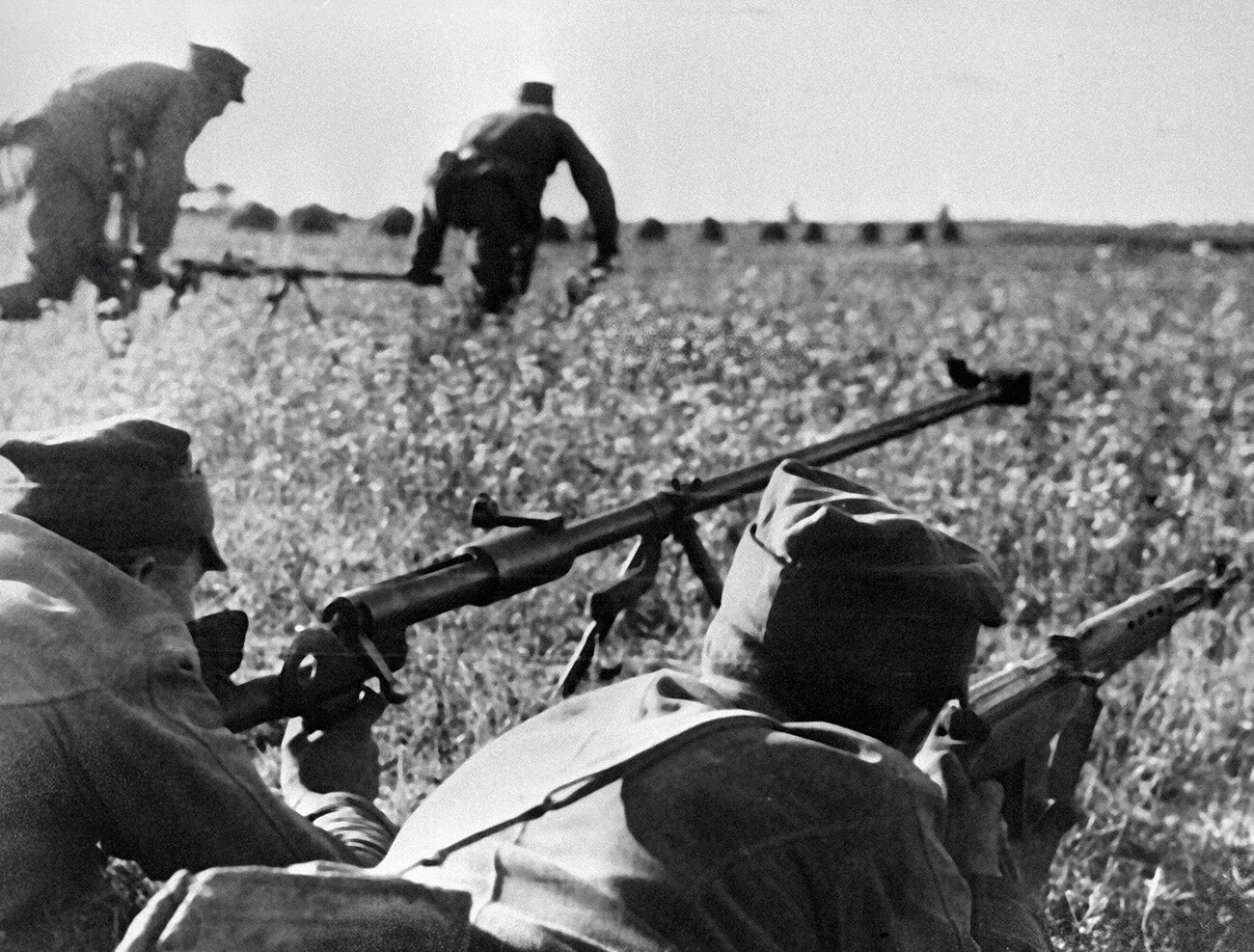
Anti-tank rifle crews of the Polish Army take up firing positions on the approaches to the city of Siedlce.
SputnikHowever, Świerczewski ignored the danger and ordered them to continue to break through to the west. One of the Polish officers later emotionally commented on the actions of his commander: “Świerczewski must have been drunk when he commanded.”
Only thanks to Konev’s personal intervention was the offensive stopped and the Polish units broke through to their own, but with heavy losses. The Red Army entered Dresden only on May 8.
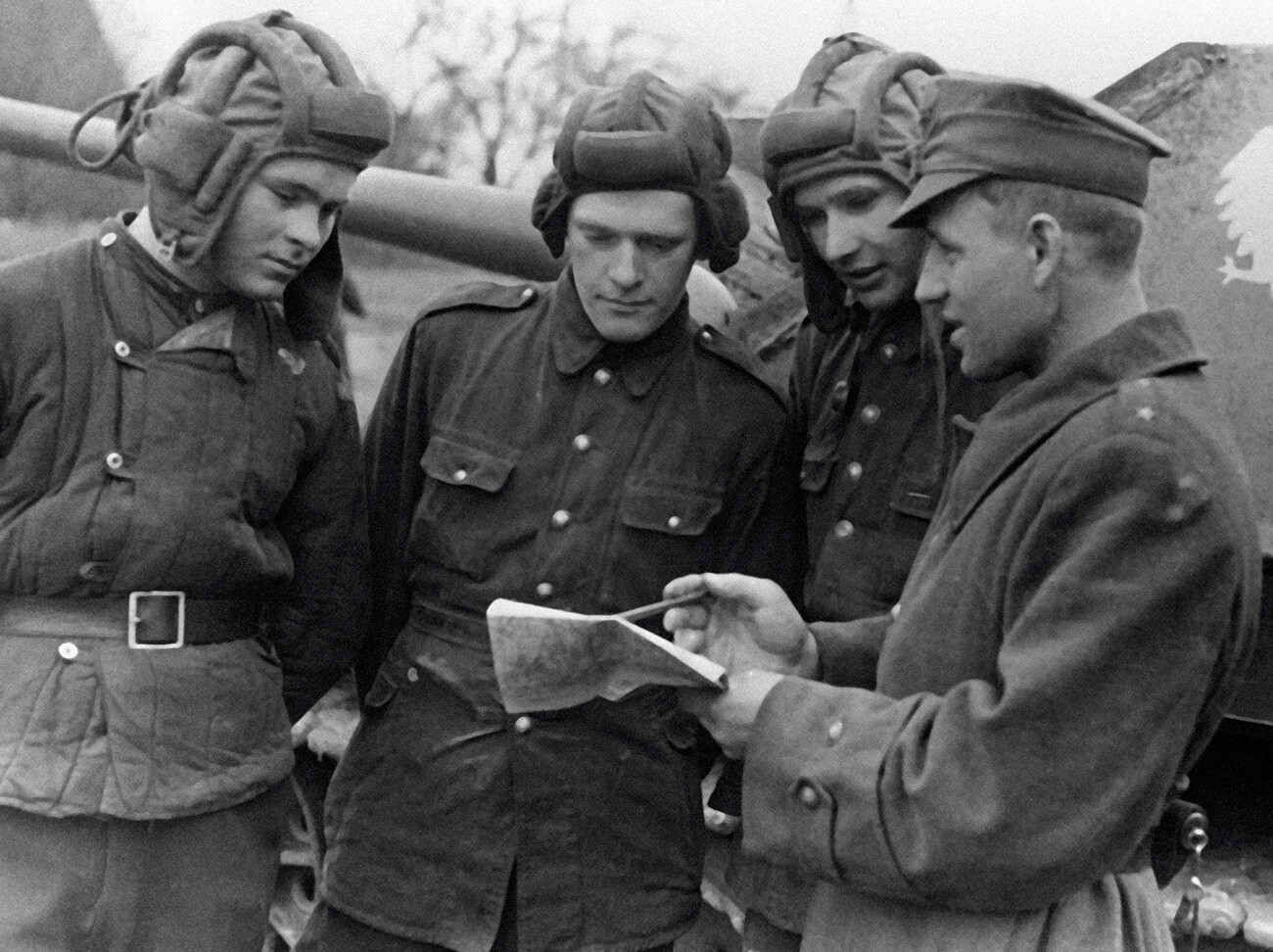
A podporuchik (second lieutenant) of the Polish Army (right) sets a combat mission to the crew of a self-propelled gun.
SputnikAt the same time, the 1st Army of the Ludowe Wojsko Polskie participated in the capture of Berlin. The Poles made up about a tenth of all the forces storming the “lair of the beast”.
This is how army commander General Stanislav Poplavsky described the actions of his soldiers in urban battles: “Enemy heavy machine guns fired from the basement of one building. The Kosciuszko men had to lie down. But, Corporal Levchishin, hugging the pavement, got close to the building and threw two grenades into the basement. The machine guns fell silent. Soon, the building was captured. A white and red flag appeared on its roof – the first Polish banner over the ruins of Berlin!
It is not known which of the soldiers wore the flag on their chests and which hero hoisted it there as a symbol of the coming complete victory, but all the soldiers felt their involvement in this event.”
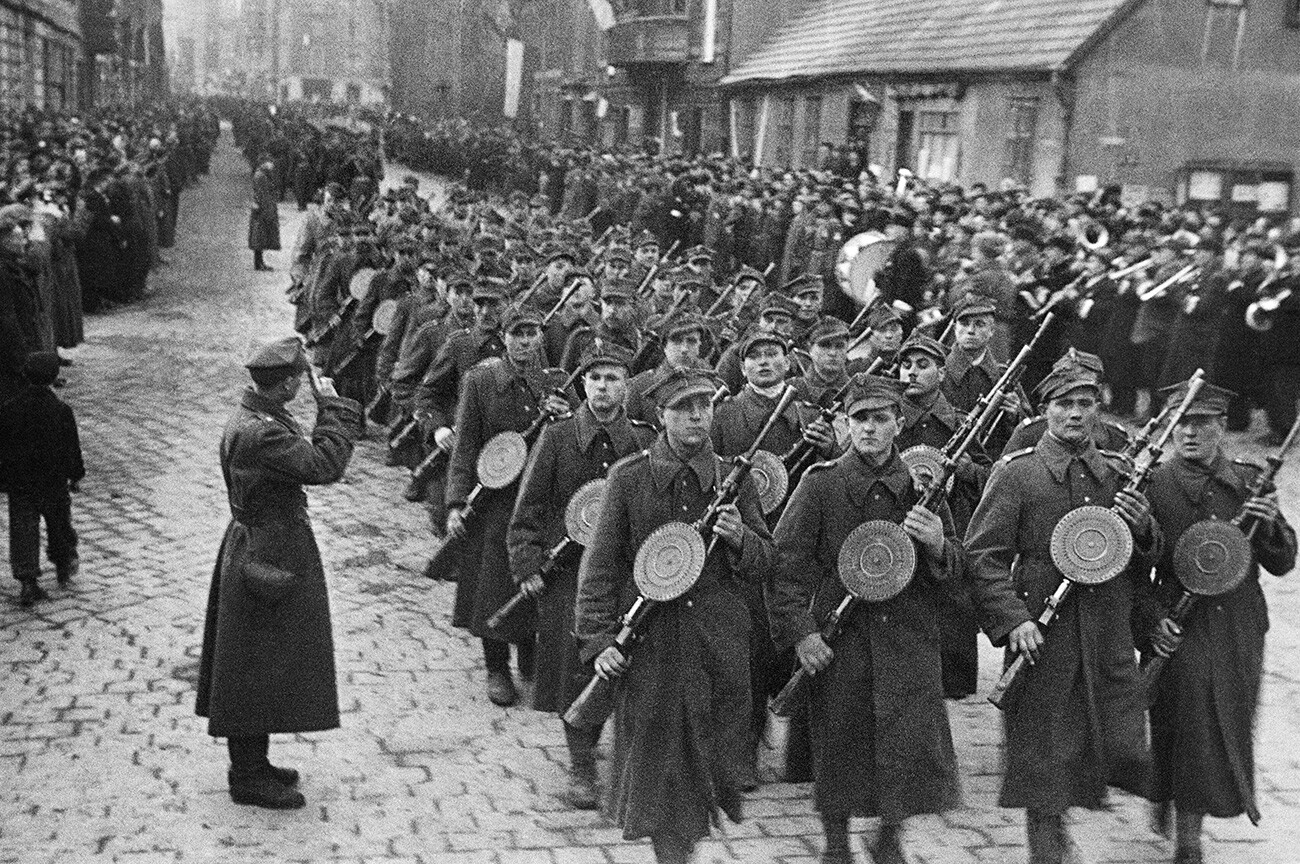
Soldiers of the Polish Army walk along the streets of the city of Lublin, liberated from the Nazis.
Grigory Kapustyansky/SputnikOver several years of fighting, the Ludowe Wojsko Polskie lost about 70,000, including the wounded. By the Summer of 1944, that number reached about 400,000. These servicemen had formed the basis of the Armed Forces of the Polish People's Republic.
In 1945, General Secretary of the Central Committee of the Polish Workers' Party Władysław Gomulka asked Stalin how much Poland owed the Soviet Union for all the weapons it had received during the war.
“There is no price for blood. The allies do not trade in blood,” the Soviet leader replied.
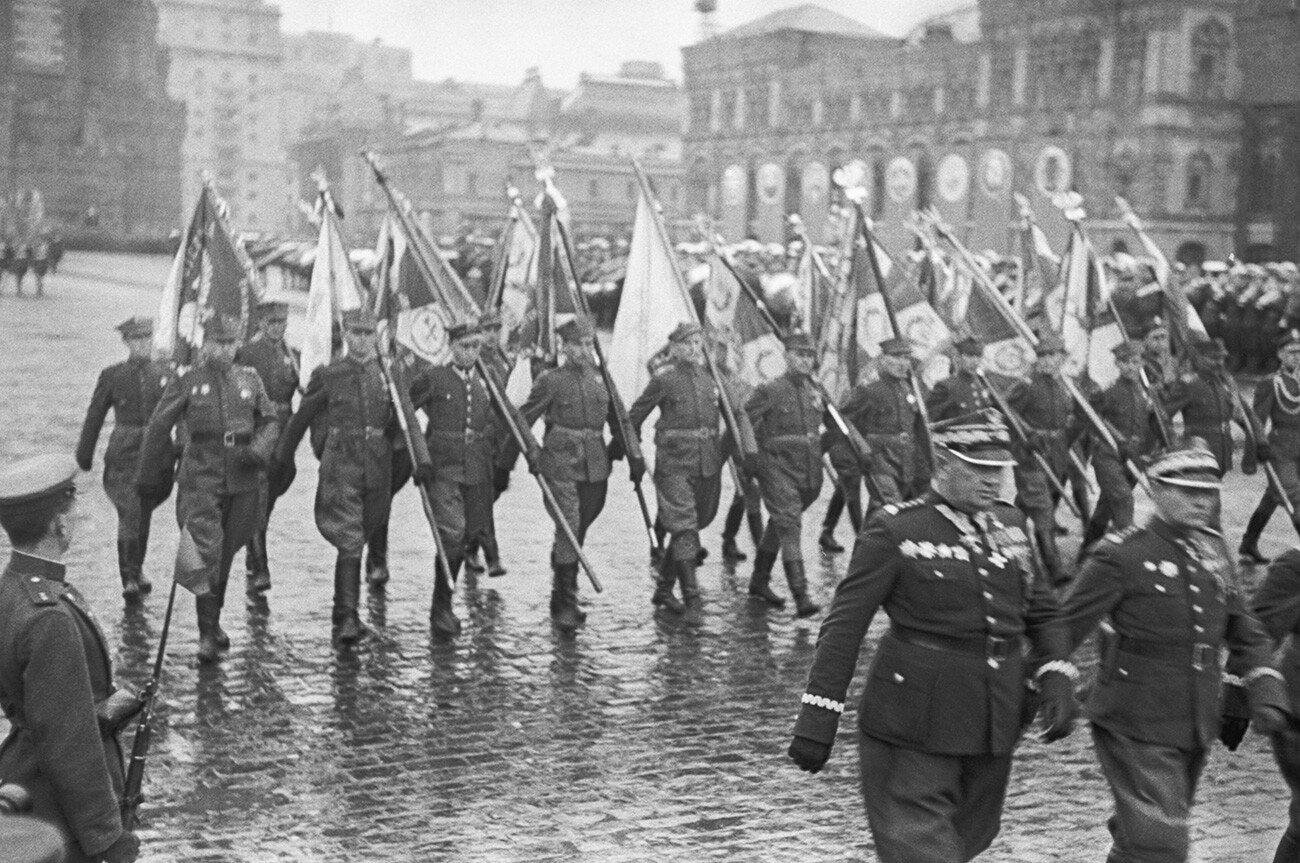
Soldiers and officers of the 1st Polish Army during the Victory Parade on Red Square.
Sergei Loskutov/SputnikIf using any of Russia Beyond's content, partly or in full, always provide an active hyperlink to the original material.
Subscribe
to our newsletter!
Get the week's best stories straight to your inbox